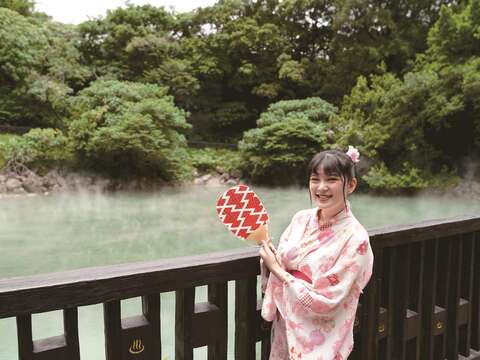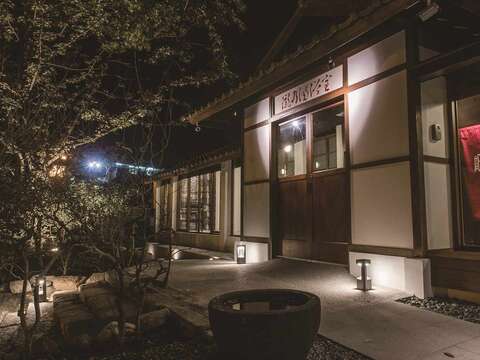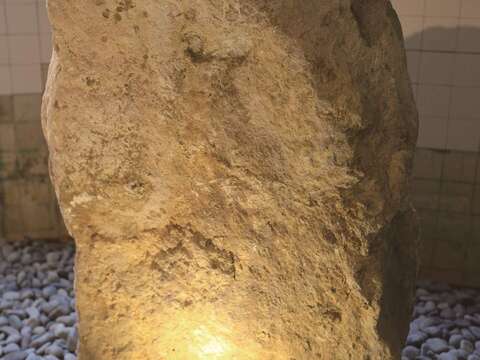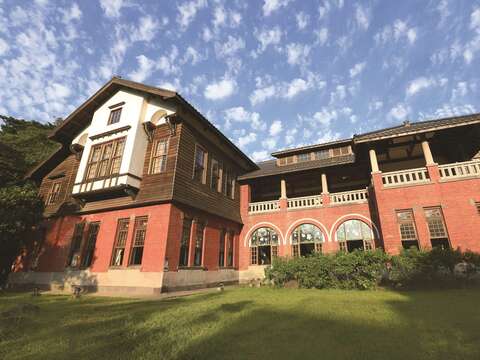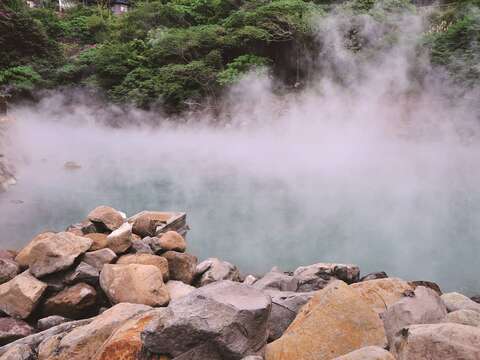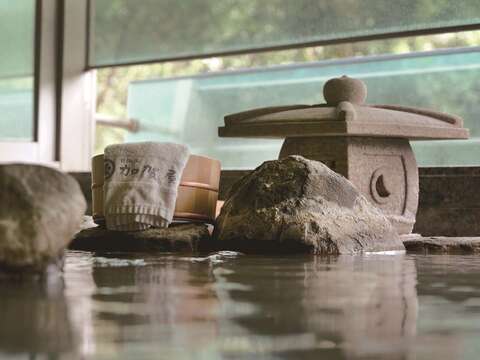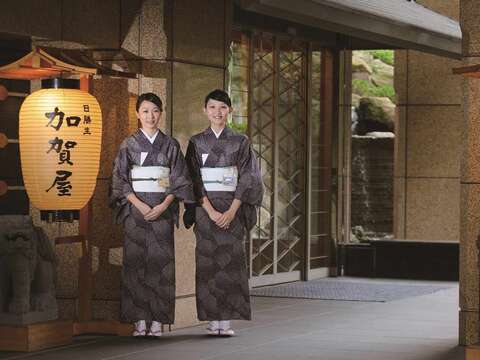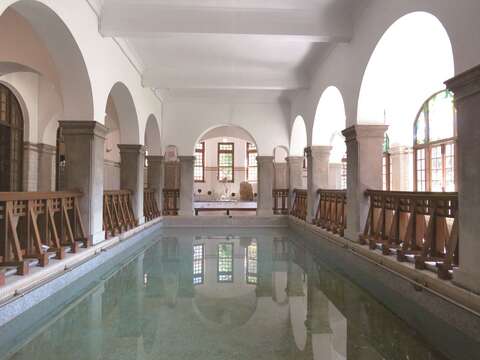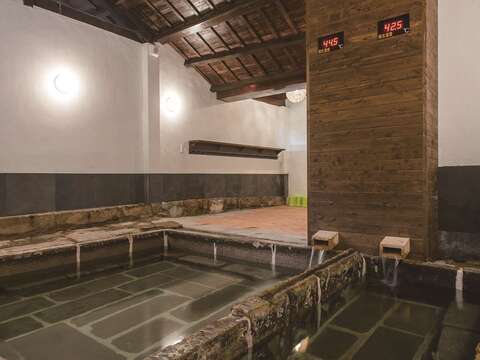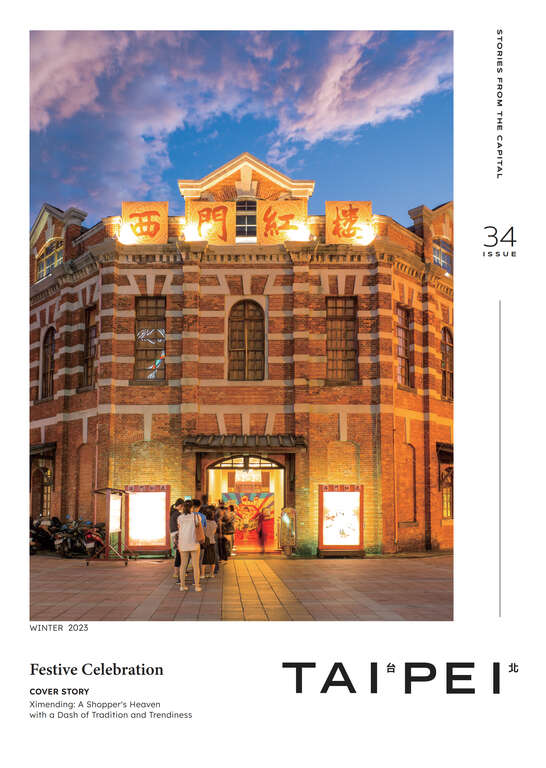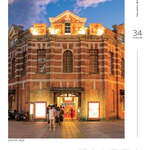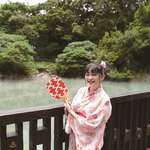Post date:2023-12-11
1758
TAIPEI #34 (2023 Winter)
Soak in History: A Winter Journey to Taiwan's Timeless Hot Springs
Author Rick Charette
Photographer Beitou Hot Spring Museum, Long Nice Hot Springs, Radium Kagaya, MyTaiwanTour
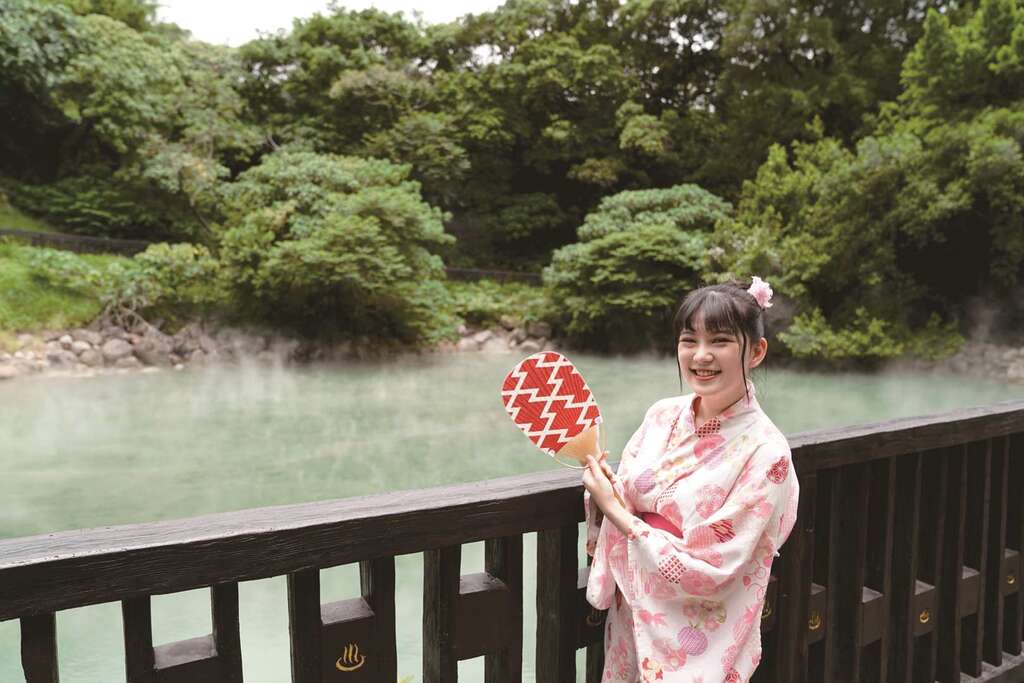 ▲Thermal Valley of Beitou, located on the outskirts of Taipei City, is a must-visit destination in winter. (Photo・Radium Kagaya)
▲Thermal Valley of Beitou, located on the outskirts of Taipei City, is a must-visit destination in winter. (Photo・Radium Kagaya)
The deep cool of winter has descended upon Taiwan, stimulating hot-spring aficionados to head for the hills. There's perhaps no better way to reinvigorate one's chilled bones and spirit than a good hot-spring soak.
From the busyness and bustle of downtown Taipei, the tranquility and soothing mountain scenery of the Beitou (北投) hot-springs resort area, in the city's northwest sector, is just a 30-minute ride away by metro. The main resort area is in a shallow valley, carved by the Beitou Stream (北投溪), that cuts into the base of the mighty Yangmingshan (陽明山) massif. Directly before the valley's west-end opening is MRT Xinbeitou Station.
Let's head out on an introductory Beitou tour through space and time, exploring the hot-spring district's geological origins and cultural-historical significance.
Geological Origins — Molten Fire Down Below
The Yangmingshan massif is part of north Taiwan's Datun Volcano Group, active from about one million to 200,000 years ago. A large magma chamber, about 50km2, bubbles underneath, with its top just 8 kilometers beneath the surface. The key beneficial result for today's tourist is that these mountains brim with hot springs, fumaroles, and sulfur pits — plus hot-spring resort hotels and public baths.
From Enchanted Valley to Popular Attractions
The Mandarin place name "Beitou" is from the name bestowed by the area's indigenous Ketagalan people, "patauw," meaning "home of the witches." They thought that surely the great sulfurous mists generated in the Beitou Stream valley meant it was an enclave of magical goings-on. During the Qing Dynasty, the Han Chinese came to harvest the sulfur deposits for munitions and trade.
Later, Taiwan was controlled by the Japanese from 1895 to 1945, and their passion for hot-spring soaking was introduced and has since become a beloved pastime shared by many Taiwanese people. The Beitou Stream valley was developed primarily for use by the military — for officers on R&R and for injured servicemen. The place really began to boom with the transport of many injured during the Russo-Japanese War from 1904 to 1905. Beitou Park (北投公園), opened in 1913 along with the Beitou Public Bathhouse (北投公共浴場), was landscaped in classical European style. After the Japanese departure following the end of WWII, it was returned to today's more natural look.
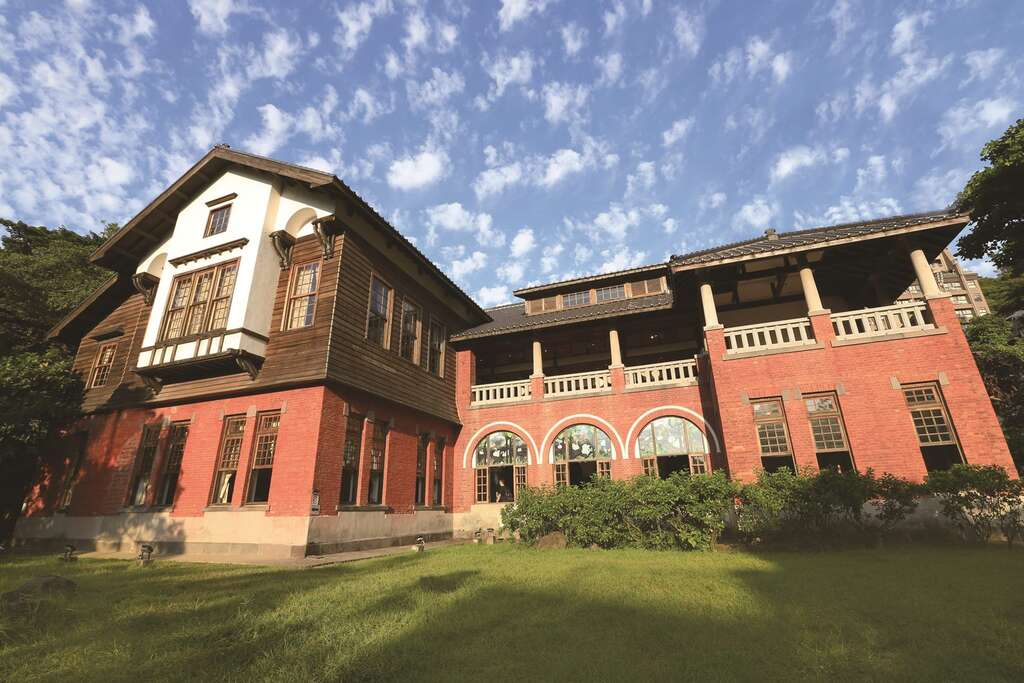 ▲It was not until 1994, when students and teachers from Beitou Elementary School petitioned the government, that Beitou Hot Spring Museum was preserved as a municipal monument and extensively renovated. (Photo・Beitou Hot Spring Museum)
▲It was not until 1994, when students and teachers from Beitou Elementary School petitioned the government, that Beitou Hot Spring Museum was preserved as a municipal monument and extensively renovated. (Photo・Beitou Hot Spring Museum)
The Beitou Hot Spring Museum (北投溫泉博物館), just a short walk from MRT Xinbeitou Station, is this history-steeped district's most important heritage site. It is a handsome Japanese-Western eclectic architecture of red brick and white stucco that originally housed the Beitou Public Bathhouse — Taiwan's first and East Asia's largest hot-spring public bath during the Japanese era. A Romanesque pool and columns have been restored, as has the original large, breezy tatami resting room. And there are many intriguing artifacts and informative displays, including a fine collection of Japanese-period black-and-white photos and documentary film footage providing glimpses of yesteryear Beitou and Taipei.
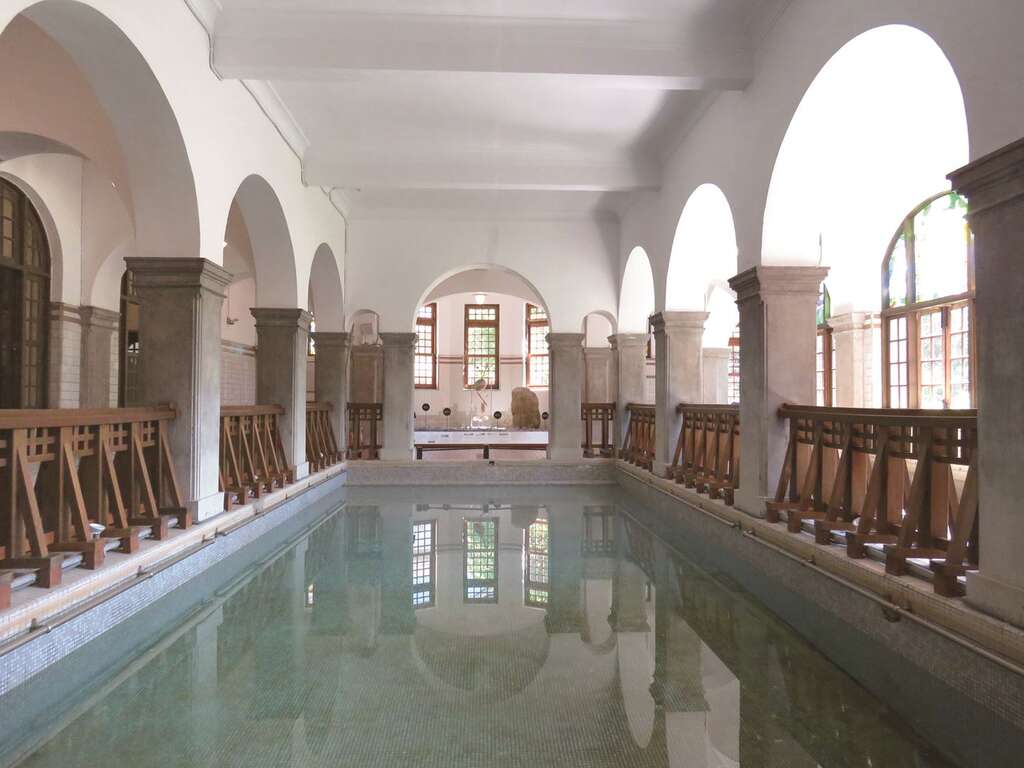 ▲One distinctive feature within the Beitou Hot Spring Museum is the Roman-style grand bath, enclosed by round arches and columns. (Photo・Beitou Hot Spring Museum)
▲One distinctive feature within the Beitou Hot Spring Museum is the Roman-style grand bath, enclosed by round arches and columns. (Photo・Beitou Hot Spring Museum)
Taiwan's Hot-Spring Culture & Beitou's Natural Treasure
When the Japanese took over Taiwan, experts were dispatched to survey the land, mapping out all exploitable natural resources. This study included hot-springs, and in the ensuing decades, many resorts were developed.
Beyond the wide choice of scenic settings, another key factor for today's international traveler is the diverse therapeutic qualities of the mineral waters in these myriad locations, catering to specific physical and spiritual needs. For many, of course, the need of the moment in the winter months is simply to escape the season's damp chill.
Take a walk up through the long, narrow, leafy Beitou Park along the meandering pathways that follow along either side of the Beitou Stream. High off in the distance loom the Yangmingshan peaks; high above the valley's inner end you may espy rock climbers scaling bare cliffs.
Imagine days gone by, when Beitou was the first hot-spring resort area in Taiwan. Along the Beitou Stream, there are five "taki (瀧)," literally small waterfalls in Japanese. Since the stream waters are actually heated, each taki forms a natural spa site. Early on, before many bathhouses were developed, Japanese would come and soak in the pools below the falls — naked, in the Japanese fashion. This caused quite a stir with locals, and Japanese officials thought it best to stop the practice, to maintain Japanese dignity and esteem.
Today, only foot-soaking is allowed in the stream, and the once-vertical waterfalls have become hardly noticeable due to river erosion. However, the bathhouses developed alongside each taki continue to thrive to this day, including Long Nice Hot Springs (瀧乃湯), formerly known as "Taki No Yu," meaning hot spring by the waterfall. Generally, modern facilities now either provide separate men's and women's pools where bathing is done au naturel or mixed pools where swimwear and swimming caps are required.
Mineral Water Qualities
The Beitou area has three types of spring waters: white sulfur, green sulfur, and iron sulfur. The primary sources of the white sulfur are two large, moon-like depressions in the hills above the Sulfur Valley (硫磺谷, Liuhuanggu) and Dragon-Phoenix Valley (龍鳳谷, Longfenggu). Well-built walkways bring you through the scalded landscapes of steam vents, bubbling hot-spring pools, rich-yellow sulfur deposits, and bare-rock perimeter walls. Most of Beitou's hot-spring establishments use these waters.
Within a compact side valley near Beitou Park's uppermost point is Thermal Valley (地熱谷), also called Hell Valley. Why? Steam fills up the high-walled depression at the culmination of this dead-end valley, rising from a shallow lake of bubbling and spitting sulfurous waters heated by the Yangmingshan magma chamber. It's no wonder locals also refer to it as "Ghost Lake." Thermal Valley, otherwise known as "Jade Spring Valley," produces highly acidic green sulfur waters serving as the Beitou Stream's headwaters. They are the area's hottest, 80 to 100 degrees Celsius. A newly renovated pathway takes you around the lake, and there is a Spa Spring Resort (水都溫泉會館)nearby that offers a hot spring egg-boiling experience.
The green sulfur waters are also sometimes called Radium Hot Springs (鐳溫泉) possessing especially beneficial healing capacity because they have radium content that causes a corrosive reaction with the park's stream-bed andesite rocks, creating a mildly radioactive crystalline substance that forms on the rocks in crusts. This is Hokutolite (Hokuto is the Japanese name for Beitou) or "Beitou Stone (北投石)," found only in Beitou and Japan, and it is the only mineral named after a toponym in Taiwan. A large 800 kilogram sample is displayed in Beitou Hot Spring Museum.
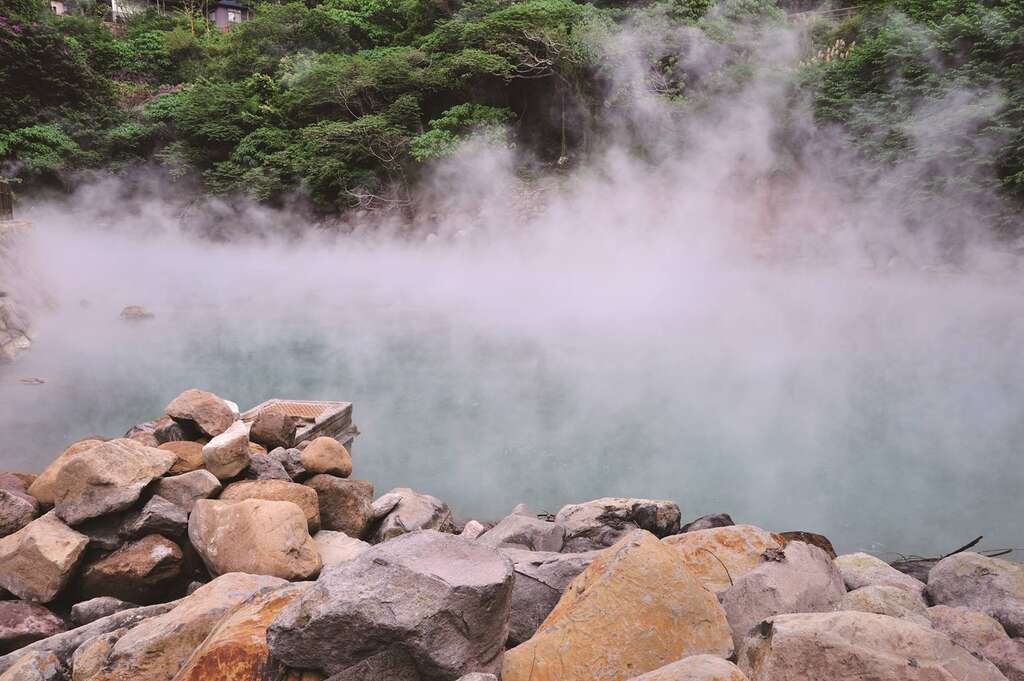 ▲▼The stones in the geothermal valley contain the radioactive element radium, and are known as Beitou Stone. The above image shows the Beitou Geothermal Valley; the below image displays the Beitou Stone from the Beitou Hot Spring Museum's permanent collection. (Above・MyTaiwanTour;Below・Beitou Hot Spring Museum)
▲▼The stones in the geothermal valley contain the radioactive element radium, and are known as Beitou Stone. The above image shows the Beitou Geothermal Valley; the below image displays the Beitou Stone from the Beitou Hot Spring Museum's permanent collection. (Above・MyTaiwanTour;Below・Beitou Hot Spring Museum)
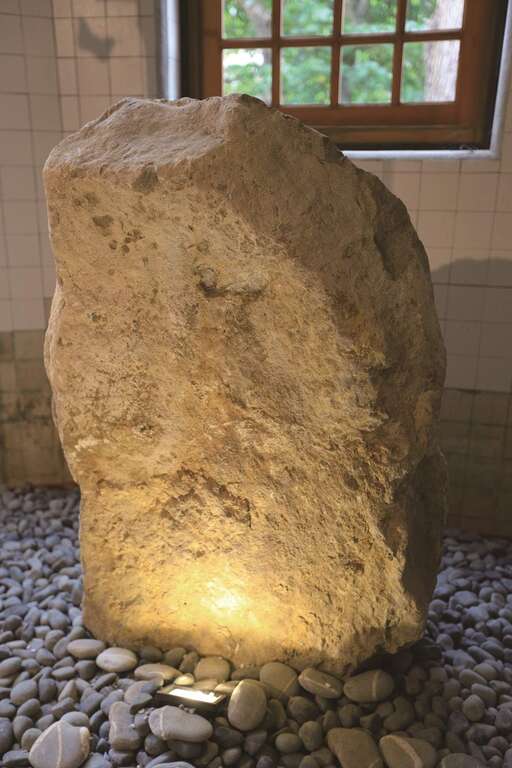
The iron sulfur waters are characterized by a relatively low temperature, lack of odor, and the water is transparent with a light brown color. Due to the presence of iron in the water, it is believed to have therapeutic effects on conditions such as neuralgia and rheumatism.
Other Notable Attrations in Beitou
Immerse yourself in history, quite literally, with a soothing soak at the bathhouse Long Nice Hot Springs, located right outside Beitou Park just up-valley from the museum. This is the oldest Japanese-style bathing facility in Beitou, dating back to 1907, opened by a transplanted Japanese citizen. During the Japanese era, Crown Prince Hirohito (later Emperor Showa) of Japan visited Beitou. To make his creek exploration easier, stepping stones were placed near the second taki. A monument, inscribed with "Monument to the Crossing of His Highness the Crown Prince," was later erected in the courtyard of the then Taki No Yu. This historical connection adds an extra layer of significance to the later renamed Long Nice Hot Springs and the surrounding area.
Though a thorough renovation was undertaken last decade, both the exterior and interior still retain a faithful "old Japan" unadorned simplicity. There are Otokoyu and Onnayu, separate public baths for men and women, along with a few private baths for couples and families up to five people (women's and private facilities added about 1950), and a new courtyard foot bath.
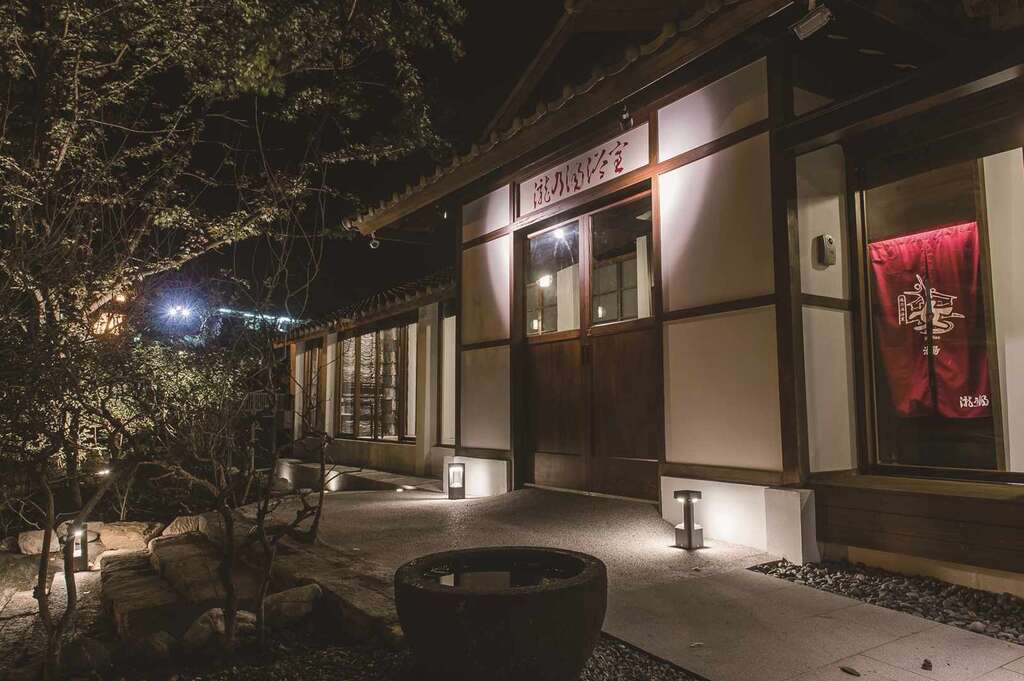 ▲▼Long Nice Hot Springs is the oldest Japanese-style hot spring bathhouse in the area, offering the most authentic green sulfur hot spring experience. (Photo・Long Nice Hot Springs)
▲▼Long Nice Hot Springs is the oldest Japanese-style hot spring bathhouse in the area, offering the most authentic green sulfur hot spring experience. (Photo・Long Nice Hot Springs)
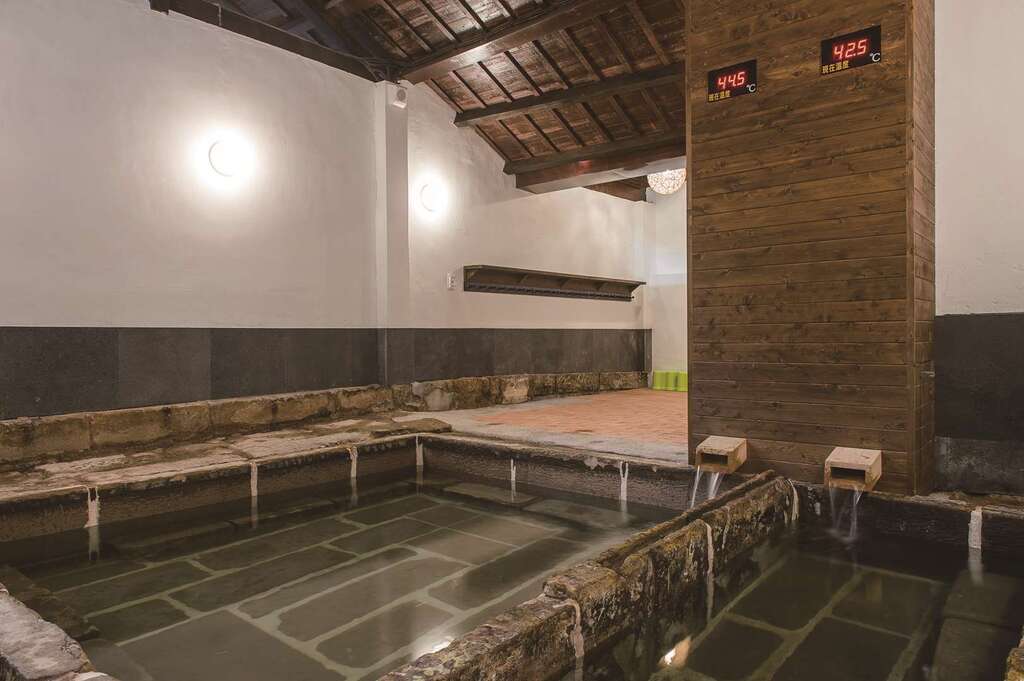
The simple men's stone bath, which retains its original appearance, is in the classical Meiji bathhouse style, now rarely seen in Japan itself. This was built with the famed local Qilian (唭哩岸) stone and sealed with a sulfur slurry to prevent erosion and osmotic infiltration from the Thermal Valley green sulfur waters used, giving them the original Meiji look. Qilian stone was also used for the women's bath, engendering a rustic old-world character. Quarrying of Qilian stone has since been prohibited, leaving these baths one of a kind.
Outside the park directly facing the museum is a site offering a unique blend of contemporary luxury and historical significance. The upscale Radium Kagaya (日勝生加賀屋) has both public men's and women's pools as well as private bathing facilities. White sulfur waters are piped in. Ladies dressed like geishas greet arriving guests outside the hotel. Immediately down-valley (west) of the hotel, in a small park, are the ruins of Tiangouan (天狗庵), Beitou's first privately-owned hot spring hotel opened in 1896. Among the remains on display are a stone staircase and a number of columns.
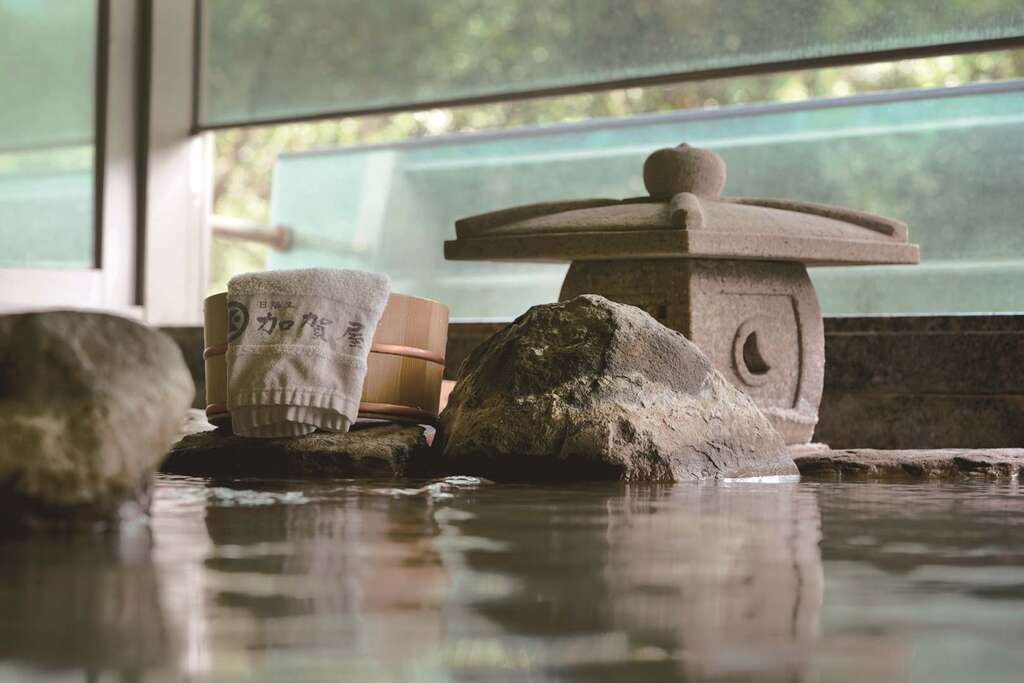 ▲▼The predecessor of the Radium Kagaya was Taiwan's first Japanese-style hot spring inn, Tiangouan. (Photo・Radium Kagaya)
▲▼The predecessor of the Radium Kagaya was Taiwan's first Japanese-style hot spring inn, Tiangouan. (Photo・Radium Kagaya)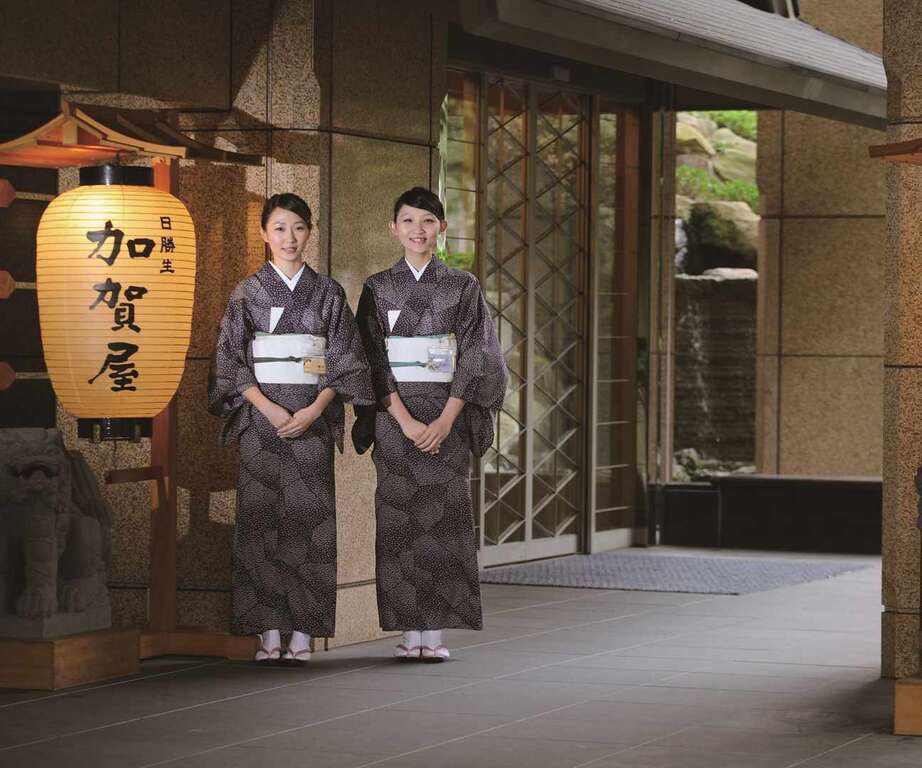
Inside the park immediately down-valley from the hot-spring museum is the expansive, striking Beitou Library (北投圖書館, Taipei Public Library Beitou Branch), Taiwan's first green-building library. A work of stimulating innovation, built of wood and steel, everything recyclable, it looks like a giant treehouse. Rooftop greenery helps keep the interior cool, rainwater is gathered for varied interior use, and there are treetop-shaded open-air reading balconies on the second floor, plus many other impressive green-architecture highlights.
♨️List of Certified Hot Spring Businesses
Soak in History: A Winter Journey to Taiwan's Timeless Hot Springs
Author Rick Charette
Photographer Beitou Hot Spring Museum, Long Nice Hot Springs, Radium Kagaya, MyTaiwanTour
 ▲Thermal Valley of Beitou, located on the outskirts of Taipei City, is a must-visit destination in winter. (Photo・Radium Kagaya)
▲Thermal Valley of Beitou, located on the outskirts of Taipei City, is a must-visit destination in winter. (Photo・Radium Kagaya)The deep cool of winter has descended upon Taiwan, stimulating hot-spring aficionados to head for the hills. There's perhaps no better way to reinvigorate one's chilled bones and spirit than a good hot-spring soak.
From the busyness and bustle of downtown Taipei, the tranquility and soothing mountain scenery of the Beitou (北投) hot-springs resort area, in the city's northwest sector, is just a 30-minute ride away by metro. The main resort area is in a shallow valley, carved by the Beitou Stream (北投溪), that cuts into the base of the mighty Yangmingshan (陽明山) massif. Directly before the valley's west-end opening is MRT Xinbeitou Station.
Let's head out on an introductory Beitou tour through space and time, exploring the hot-spring district's geological origins and cultural-historical significance.
Geological Origins — Molten Fire Down Below
The Yangmingshan massif is part of north Taiwan's Datun Volcano Group, active from about one million to 200,000 years ago. A large magma chamber, about 50km2, bubbles underneath, with its top just 8 kilometers beneath the surface. The key beneficial result for today's tourist is that these mountains brim with hot springs, fumaroles, and sulfur pits — plus hot-spring resort hotels and public baths.
From Enchanted Valley to Popular Attractions
The Mandarin place name "Beitou" is from the name bestowed by the area's indigenous Ketagalan people, "patauw," meaning "home of the witches." They thought that surely the great sulfurous mists generated in the Beitou Stream valley meant it was an enclave of magical goings-on. During the Qing Dynasty, the Han Chinese came to harvest the sulfur deposits for munitions and trade.
Later, Taiwan was controlled by the Japanese from 1895 to 1945, and their passion for hot-spring soaking was introduced and has since become a beloved pastime shared by many Taiwanese people. The Beitou Stream valley was developed primarily for use by the military — for officers on R&R and for injured servicemen. The place really began to boom with the transport of many injured during the Russo-Japanese War from 1904 to 1905. Beitou Park (北投公園), opened in 1913 along with the Beitou Public Bathhouse (北投公共浴場), was landscaped in classical European style. After the Japanese departure following the end of WWII, it was returned to today's more natural look.
 ▲It was not until 1994, when students and teachers from Beitou Elementary School petitioned the government, that Beitou Hot Spring Museum was preserved as a municipal monument and extensively renovated. (Photo・Beitou Hot Spring Museum)
▲It was not until 1994, when students and teachers from Beitou Elementary School petitioned the government, that Beitou Hot Spring Museum was preserved as a municipal monument and extensively renovated. (Photo・Beitou Hot Spring Museum)The Beitou Hot Spring Museum (北投溫泉博物館), just a short walk from MRT Xinbeitou Station, is this history-steeped district's most important heritage site. It is a handsome Japanese-Western eclectic architecture of red brick and white stucco that originally housed the Beitou Public Bathhouse — Taiwan's first and East Asia's largest hot-spring public bath during the Japanese era. A Romanesque pool and columns have been restored, as has the original large, breezy tatami resting room. And there are many intriguing artifacts and informative displays, including a fine collection of Japanese-period black-and-white photos and documentary film footage providing glimpses of yesteryear Beitou and Taipei.
 ▲One distinctive feature within the Beitou Hot Spring Museum is the Roman-style grand bath, enclosed by round arches and columns. (Photo・Beitou Hot Spring Museum)
▲One distinctive feature within the Beitou Hot Spring Museum is the Roman-style grand bath, enclosed by round arches and columns. (Photo・Beitou Hot Spring Museum)Taiwan's Hot-Spring Culture & Beitou's Natural Treasure
When the Japanese took over Taiwan, experts were dispatched to survey the land, mapping out all exploitable natural resources. This study included hot-springs, and in the ensuing decades, many resorts were developed.
Beyond the wide choice of scenic settings, another key factor for today's international traveler is the diverse therapeutic qualities of the mineral waters in these myriad locations, catering to specific physical and spiritual needs. For many, of course, the need of the moment in the winter months is simply to escape the season's damp chill.
Take a walk up through the long, narrow, leafy Beitou Park along the meandering pathways that follow along either side of the Beitou Stream. High off in the distance loom the Yangmingshan peaks; high above the valley's inner end you may espy rock climbers scaling bare cliffs.
Imagine days gone by, when Beitou was the first hot-spring resort area in Taiwan. Along the Beitou Stream, there are five "taki (瀧)," literally small waterfalls in Japanese. Since the stream waters are actually heated, each taki forms a natural spa site. Early on, before many bathhouses were developed, Japanese would come and soak in the pools below the falls — naked, in the Japanese fashion. This caused quite a stir with locals, and Japanese officials thought it best to stop the practice, to maintain Japanese dignity and esteem.
Today, only foot-soaking is allowed in the stream, and the once-vertical waterfalls have become hardly noticeable due to river erosion. However, the bathhouses developed alongside each taki continue to thrive to this day, including Long Nice Hot Springs (瀧乃湯), formerly known as "Taki No Yu," meaning hot spring by the waterfall. Generally, modern facilities now either provide separate men's and women's pools where bathing is done au naturel or mixed pools where swimwear and swimming caps are required.
Mineral Water Qualities
The Beitou area has three types of spring waters: white sulfur, green sulfur, and iron sulfur. The primary sources of the white sulfur are two large, moon-like depressions in the hills above the Sulfur Valley (硫磺谷, Liuhuanggu) and Dragon-Phoenix Valley (龍鳳谷, Longfenggu). Well-built walkways bring you through the scalded landscapes of steam vents, bubbling hot-spring pools, rich-yellow sulfur deposits, and bare-rock perimeter walls. Most of Beitou's hot-spring establishments use these waters.
Within a compact side valley near Beitou Park's uppermost point is Thermal Valley (地熱谷), also called Hell Valley. Why? Steam fills up the high-walled depression at the culmination of this dead-end valley, rising from a shallow lake of bubbling and spitting sulfurous waters heated by the Yangmingshan magma chamber. It's no wonder locals also refer to it as "Ghost Lake." Thermal Valley, otherwise known as "Jade Spring Valley," produces highly acidic green sulfur waters serving as the Beitou Stream's headwaters. They are the area's hottest, 80 to 100 degrees Celsius. A newly renovated pathway takes you around the lake, and there is a Spa Spring Resort (水都溫泉會館)nearby that offers a hot spring egg-boiling experience.
The green sulfur waters are also sometimes called Radium Hot Springs (鐳溫泉) possessing especially beneficial healing capacity because they have radium content that causes a corrosive reaction with the park's stream-bed andesite rocks, creating a mildly radioactive crystalline substance that forms on the rocks in crusts. This is Hokutolite (Hokuto is the Japanese name for Beitou) or "Beitou Stone (北投石)," found only in Beitou and Japan, and it is the only mineral named after a toponym in Taiwan. A large 800 kilogram sample is displayed in Beitou Hot Spring Museum.
 ▲▼The stones in the geothermal valley contain the radioactive element radium, and are known as Beitou Stone. The above image shows the Beitou Geothermal Valley; the below image displays the Beitou Stone from the Beitou Hot Spring Museum's permanent collection. (Above・MyTaiwanTour;Below・Beitou Hot Spring Museum)
▲▼The stones in the geothermal valley contain the radioactive element radium, and are known as Beitou Stone. The above image shows the Beitou Geothermal Valley; the below image displays the Beitou Stone from the Beitou Hot Spring Museum's permanent collection. (Above・MyTaiwanTour;Below・Beitou Hot Spring Museum)
The iron sulfur waters are characterized by a relatively low temperature, lack of odor, and the water is transparent with a light brown color. Due to the presence of iron in the water, it is believed to have therapeutic effects on conditions such as neuralgia and rheumatism.
Other Notable Attrations in Beitou
Immerse yourself in history, quite literally, with a soothing soak at the bathhouse Long Nice Hot Springs, located right outside Beitou Park just up-valley from the museum. This is the oldest Japanese-style bathing facility in Beitou, dating back to 1907, opened by a transplanted Japanese citizen. During the Japanese era, Crown Prince Hirohito (later Emperor Showa) of Japan visited Beitou. To make his creek exploration easier, stepping stones were placed near the second taki. A monument, inscribed with "Monument to the Crossing of His Highness the Crown Prince," was later erected in the courtyard of the then Taki No Yu. This historical connection adds an extra layer of significance to the later renamed Long Nice Hot Springs and the surrounding area.
Though a thorough renovation was undertaken last decade, both the exterior and interior still retain a faithful "old Japan" unadorned simplicity. There are Otokoyu and Onnayu, separate public baths for men and women, along with a few private baths for couples and families up to five people (women's and private facilities added about 1950), and a new courtyard foot bath.
 ▲▼Long Nice Hot Springs is the oldest Japanese-style hot spring bathhouse in the area, offering the most authentic green sulfur hot spring experience. (Photo・Long Nice Hot Springs)
▲▼Long Nice Hot Springs is the oldest Japanese-style hot spring bathhouse in the area, offering the most authentic green sulfur hot spring experience. (Photo・Long Nice Hot Springs)
The simple men's stone bath, which retains its original appearance, is in the classical Meiji bathhouse style, now rarely seen in Japan itself. This was built with the famed local Qilian (唭哩岸) stone and sealed with a sulfur slurry to prevent erosion and osmotic infiltration from the Thermal Valley green sulfur waters used, giving them the original Meiji look. Qilian stone was also used for the women's bath, engendering a rustic old-world character. Quarrying of Qilian stone has since been prohibited, leaving these baths one of a kind.
Outside the park directly facing the museum is a site offering a unique blend of contemporary luxury and historical significance. The upscale Radium Kagaya (日勝生加賀屋) has both public men's and women's pools as well as private bathing facilities. White sulfur waters are piped in. Ladies dressed like geishas greet arriving guests outside the hotel. Immediately down-valley (west) of the hotel, in a small park, are the ruins of Tiangouan (天狗庵), Beitou's first privately-owned hot spring hotel opened in 1896. Among the remains on display are a stone staircase and a number of columns.
 ▲▼The predecessor of the Radium Kagaya was Taiwan's first Japanese-style hot spring inn, Tiangouan. (Photo・Radium Kagaya)
▲▼The predecessor of the Radium Kagaya was Taiwan's first Japanese-style hot spring inn, Tiangouan. (Photo・Radium Kagaya)
Inside the park immediately down-valley from the hot-spring museum is the expansive, striking Beitou Library (北投圖書館, Taipei Public Library Beitou Branch), Taiwan's first green-building library. A work of stimulating innovation, built of wood and steel, everything recyclable, it looks like a giant treehouse. Rooftop greenery helps keep the interior cool, rainwater is gathered for varied interior use, and there are treetop-shaded open-air reading balconies on the second floor, plus many other impressive green-architecture highlights.
♨️List of Certified Hot Spring Businesses
Proper Hot-Spring Bathing Etiquette Here are a few rules to follow at public hot spring facilities:
|
Gallery
:::
Popular articles
 TAIPEI Quarterly 2023 Winter Vol.34
TAIPEI Quarterly 2023 Winter Vol.34 Ximending: A Shopper's Heaven with a Dash of Tradition and Trendiness (TAIPEI Quarterly 2023 Winter Vol.34)
Ximending: A Shopper's Heaven with a Dash of Tradition and Trendiness (TAIPEI Quarterly 2023 Winter Vol.34) Exploring Taipei's Vibrant Indoor Markets: A Flavorful Journey through History and Culture (TAIPEI Quarterly 2023 Winter Vol.34)
Exploring Taipei's Vibrant Indoor Markets: A Flavorful Journey through History and Culture (TAIPEI Quarterly 2023 Winter Vol.34) Soak in History: A Winter Journey to Taiwan's Timeless Hot Springs (TAIPEI Quarterly 2023 Winter Vol.34)
Soak in History: A Winter Journey to Taiwan's Timeless Hot Springs (TAIPEI Quarterly 2023 Winter Vol.34) The Art of Wealth Seeking: Temples and Culture in Taipei (TAIPEI Quarterly 2023 Winter Vol.34)
The Art of Wealth Seeking: Temples and Culture in Taipei (TAIPEI Quarterly 2023 Winter Vol.34) Bookstores Redefined: Embracing Global Connections and Creativity (TAIPEI Quarterly 2023 Winter Vol.34)
Bookstores Redefined: Embracing Global Connections and Creativity (TAIPEI Quarterly 2023 Winter Vol.34)
 Soak in History: A Winter Journey to Taiwan's Timeless Hot Springs (TAIPEI Quarterly 2023 Winter Vol.34)
Soak in History: A Winter Journey to Taiwan's Timeless Hot Springs (TAIPEI Quarterly 2023 Winter Vol.34)